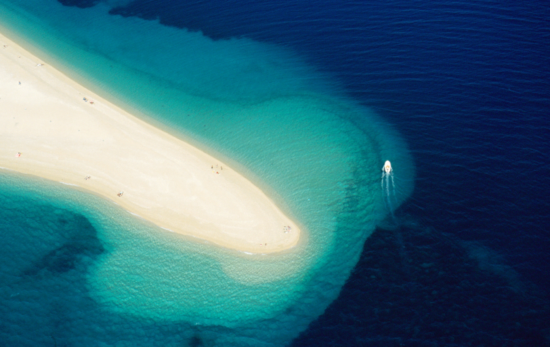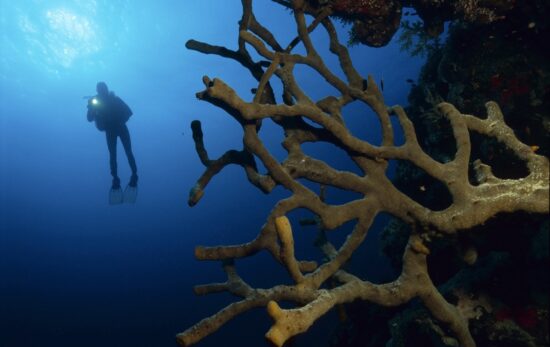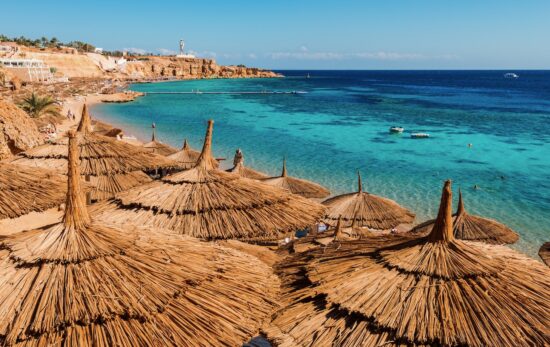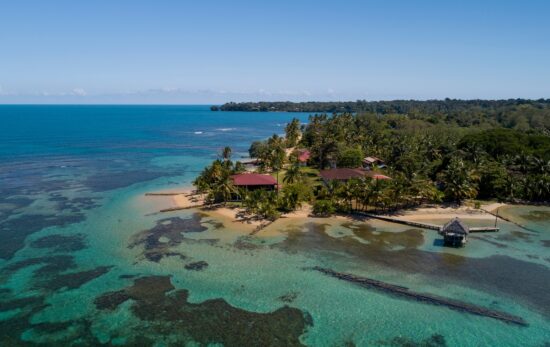Hawksbill sea turtles are among the most desirable encounters while snorkeling or diving along tropical coral reefs. We have selected some fun information and curiosities to help you enjoy these marvelous encounters even more.
Check out the best places to swim with hawksbill sea turtles!
Hawksbill Sea Turtle
Eretmochelys imbricata
Hawksbill sea turtles are agile marine reptiles that inhabit coral reefs. Being a small to medium size turtle, the carapace of a hawksbill can reach a maximum length of 45 inches (114 cm), and they can weigh up to 190 lbs (86 kg). They have a flattened body shape and the head, which is small and sharp, ends with a “beak” that might remind you of a hawk.
As with every sea turtle, the shell is made of the carapace (dorsal) and the plastron (ventral). The carapace is made up of overlapping scales, traversed by light, dark and golden shades. The plastron is yellowish. The forelimbs of hawksbill turtles have two claws on each flipper.

Hawksbill Sea Turtle Facts
- Name: Its name comes from the shape of its mouth, which is reminiscent of a hawk.
- Diet: Hawksbills are omnivorous. They feed on several species of invertebrates but most enjoy sponges. This is certainly an unusual diet, because sponges are made of a material very similar to thin glass (with has a dimension like needles). You might assume this could hurt their throat. However, it seems the material does not cause any damage. The diet of a hawksbill might also include squid, shrimp, jellyfish and algae.
- Habitat: Hawksbills are found in all tropical regions, sometimes even in subtropical oceans, including the Atlantic, Pacific and Indian Ocean. Their preferred habitat is along coral reefs.
- Migration: These turtles can make long migrations. They usually migrate from a foraging area to a breeding area and back again.
- Reproduction: A hawksbill turtle reaches sexual maturity depending on its geographical location. In the Caribbean, turtles mature at 10 to 20 years, and in the Seychelles and Australia, turtles mature at 30 years or older. Females nest every 2 or 3 years at night (except some of them in the Seychelles, Red Sea and Maldives that have been seen nesting or scoping out good nesting spots during the day). There is no defined nesting season. A female turtle will lay her eggs on the very same beach or not far from where she was born. This place may be near or far from the foraging area. For example, some Australian turtles nest in the Solomon Islands, which are not so far from the northeastern Australian coast.
- Threats: The species has declined dramatically in many areas where it was once abundant. It’s the most threatened species of sea turtle. Most of the commercial trade of hawksbills is for their shells (the carapace and plastron are in great demand). In addition, hawksbill eggs are eaten by local people. In Indonesia, the eggs are harvested and sold during religious festivals, while newborns are stuffed and sold as souvenirs to tourists. Other causes of death are pollution, impact with boats and habitat deterioration.
- Current population trend: Decreasing.
- Conservation Status: Critically Endangered.
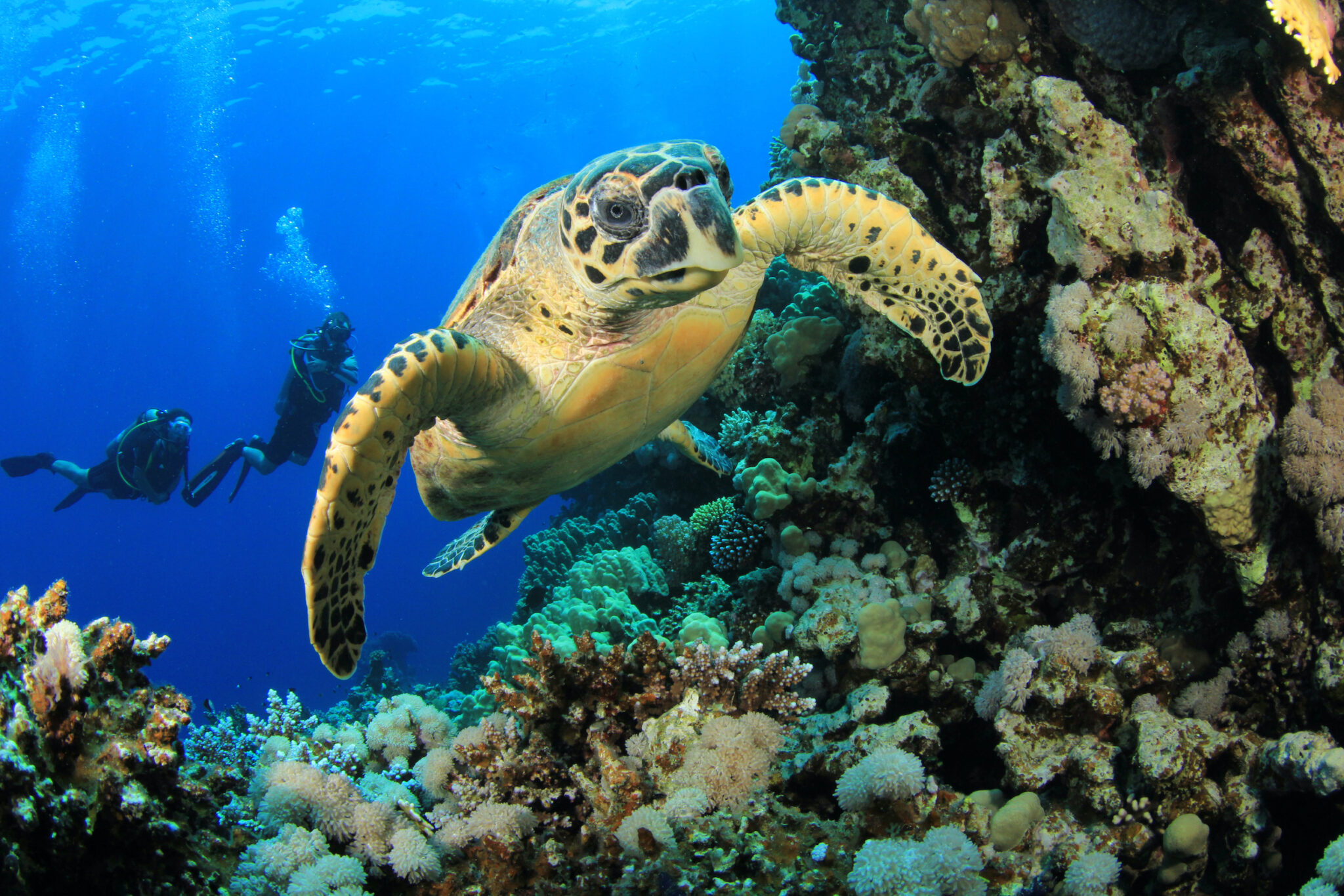
Q&A About Hawksbill Sea Turtle
Where can I go diving and swimming with hawksbill sea turtles?
We have created a list of the 10 best places for diving and swimming with sea turtles!
How many eggs do hawksbill turtles lay in one nest?
They lay the largest number of eggs in the group of sea turtles. On average, we find 60 to 200 plus eggs in a nest. Females lay eggs every 2 to 3 years, and nesting occurs in at least 70 countries.
Why do hatchlings emerge together?
Because their chamber is deep, and they are small. So opening their eggs together makes climbing to the surface easier. In addition, it reduces the risk of being eaten along the way to the sea. If they came out alone, they would be easy prey.
How long do hawksbill sea turtles live?
Their lifespan is around 30 to 50 years.
How many hawksbill turtles are left?
The population estimate is between 20,000 and 23,000 nesting females. Their major threat is the tortoise shell trade that started over 2,000 years ago with Julius Caesar and has only increased in the past decades, bringing these turtles close to extinction.
How can I see a sea turtle nesting or their babies?
You have to go through serious, turtle-friendly operators. Check out our top 10 list to get more info.
Sea Turtle Saviors
Fortunately, there are several groups of experts who have founded associations which protect these animals through research, education, training and habitat protection.
For further information take a look at: Hepca, Sea Turtle Conservancy, Olive Ridley Project, See Turtles, Sea Turtle Inc., Sea Turtle Preservation Society and The Leatherback Trust.
Credits
Special thanks to Agnese Mancini from Hepca and Alessandra Sulis.
